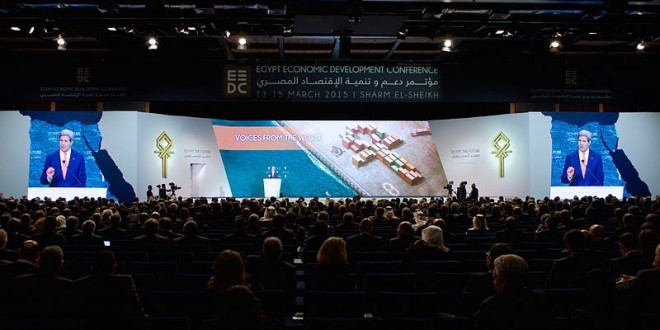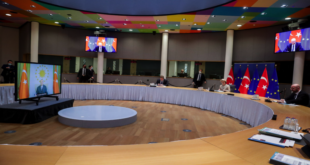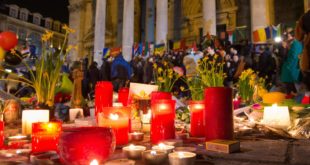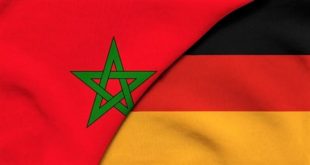After two mass movements (January 2011 and June 2013), two ousted presidents (Mubarak and Mursi) and the formal disbanding or clampdown on their respective political organisations, three constitutions, seven elections, four years of demonstrations, street clashes, strikes, and more recently terrorist attacks, Egypt is struggling to remain stable in a disintegrating environment.
This chaotic transition process, alongside the spectacular growth of external threats, moved a large part of public opinion to welcome the restoration of the security apparatus following the ousting of President Muhammad Mursi on 3 July, 2013. Widely perceived as a re-establishment of order and a first step in the reconstruction of Egyptian society, the regime of Abd Al-Fattah Al-Sissi is undoubtedly more stable than those of the Supreme Council of the Armed Forces (SCAF) and the Muslim Brotherhood, its two immediate predecessors.
However, in many respects, it remains fragile. Supporters of the deposed president Mursi continue to present a radical opposition, refusing to recognise the new regime as legitimate. More broadly, as President, Al-Sissi has been unable to accommodate the different political forces which supported the coup and the July 2013 transition process. The most noticeable symptom of this incapacity to find a new political balance is the fact that the road-map announced on 8 July, 2013, is still unachieved, since the parliamentary elections have not been organized yet.
Added to these problems, the regime – much like its predecessors – is still facing social protests from various parts of society. Also like previous administrations, Al-Sissi’s government has chosen to deal with such societal opposition almost uniquely through the coercive powers of the security forces – an approach that can hardly constitute a long-term strategy.
However, such discontent may be quelled if Egypt’s economy can recover. On this front, the new regime can point to a number of successes. While gains remain fragile, the green shoots of improvements are starting to appear. Over four years after the initial revolutionary wave of 2011, it is time to take stock of the political and economic situation inside Egypt and look for pointers as to the country’s immediate and mid-term future.
New regime, old game: Egypt’s politics of exclusion
Almost two years after the ousting of Mursi, crackdowns continue against Muslim Brotherhood members and sympathizers. Along with their allies, such actors remain shut out from the political field. This exclusion was formalized on 25 December, 2013, when the SCAF officially labelled the Brotherhood a terrorist organisation – ostensibly in response to an attack on a police headquarters two days before. As for the Brotherhood’s political wing, the Freedom and Justice Party, this had been legally recognized on 6 June 2011, a few months after the ousting of President Husni Mubarak. However, along with all other Brotherhood-affiliated organisations, the party was disbanded by decree of a special ‘court for urgent cases’ in September, 2014.
Hundreds of Muslim Brothers have also been killed, most notably during the dispersal of the Rabaa and Al-Nahda gatherings on 14 August, 2013 – which Human Rights Watch called likely “crimes against humanity”. Thousands more are in jail, including the majority of the Brotherhood leadership, while many others are living in exile. Most of the other Islamist organisations which rallied round the Brotherhood in the “Anti-Coup Alliance” of July 2013 are also facing persecution. Several of their leaders have been arrested, even those of organisation whichwithdrew from the Alliance, as the Al-Wasat party did on 28 August, 2014.
Nonetheless, sporadic demonstrations are still organised by the Alliance, although they mobilize a very small number of people and are often marked by the use of the violence. Despite such continuing confrontations and the refusal of many supporters of the current regime to negotiate with the Brotherhood, officials have stated that they would be open to the movement’s reintegration into formal politics, on the condition that it renounces violence and apologises to the Egyptian people.
Yet even putting the Islamist organisations aside, Al-Sissi’s regime is encountering difficulties integrating other political forces. In part, this is due to the difficulties of gauging the actual balance of power. Real popular support for various positions has been obscured, on the one hand, by opposition factions choosing to boycott the referendum and presidential elections, rather than voting against Al-Sissi, and, on the other, by the media’s fabrication of a false sense of national unity.
The parliamentary elections are supposed to achieve the transitional process by creating a new social contract between the regime, the political forces, and their social basis. But since 2014, they have been continuously postponed, due to the difficulties of writing an electoral law which would be both consensual and constitutional. Gerrymandering and criteria for candidacy have constantly caused judicial problems since 2011. Notably, this led to the dissolution of the elected People’s Assembly in June 2012, due to the unconstitutional nature of the electoral law issued by the SCAF nine month before. Attempts to create a new electoral law have continuously floundered since the beginning of 2013.
In addition, the different political forces supporting the regime since the fall of Mursi have divergent interests regarding the electoral system: proponents of the old regime advocating a return to the single-member district (SMD) system which existed from 1990 to 2010, while other political parties want a significant share of the seats to be elected through a proportional representation (PR) system.
Such debates are, inevitably, driven by considerations of political power. The SMD system tends to favour local notabilities and prominent businessmen, who dominated Parliament before the revolution and constituted the backbone of the then-hegemonic National Democratic Party. Conversely, the PR system gives political parties the power over such figures, who would need to win a good ranking on electoral lists created by party executives.
Finally, the anti-demonstration law of November 2013 severely damaged relations between the new regime and the activist milieu. Several young revolutionary activists have been arrested while protesting against this law without authorization, with many sentenced to jail during the summer of 2014. The broader issue of the human rights in Egypt also raised serious concerns, in the country and abroad, after Shaimaa Al-Sabbagh, a young female member of the Popular Alliance Party, was killed by security forces during a peaceful demonstration commemorating the victims of repression during the 2011 revolution.
Continuing protests
These obstacles in the path of regime consolidation take place in a context of chronic social unrest, especially in the industrial sector and universities.
After the removal of Mursi and the proclamation of a road-map for transition on 8 July 2013, trade-union leaders swore allegiance to the new regime. Kamal Abu Eita, the former leader of the Egyptian Independent Trade Union Federation, even became the Minister of Manpower and Emigration in the first government following the coup. At that time, independent labour organisations called for workers to support the new regime and to end strikes in the interests of national stability in the face of threats, embodied by the Muslim Brothers and their allies. This resulted in a decrease in the number of strikes during the second half of 2013. In addition, an anti-protest law was issued in November 2013, introducing new barriers to the organization of workers movements and resulting in the imprisonment of many labour leaders.
Such comparative calm, however, was not to last. The government’s decision on 1 January 2014 to raise the monthly minimum wage from 700 to 1200 Egyptian pounds for public-sector workers triggered a wave of strikes in the private sector during the first quarter of 2014, with private employees unhappy at unequal treatment. Discontent spread quickly to public sector workers, who demanded the immediate application of the minimum wage law, as well as the medical sector, civil servants, bus drivers, postal workers, street cleaners, and so on.
This social movement grew sufficiently powerful to contribute significantly to theresignation of the government on 24 February 2014. More broadly, according toEl-Mahroussa Center for Socioeconomic Development, 2274 protests were held in Egypt during 2014. During that time, and again during the first quarter of 2015, the main demand of the workers was the payment of their dues: according to the Egyptian law, any company making profits has to distribute part of the increased revenue to its employees.
However, this stipulation is easily circumnavigated, with Egyptian public industrial companies only declaring their losses, in order to avoid to giving bonuses to their workers. In addition, they often close factories and workshops, which results in a decrease in their productivity. Worker activists claim this constitutes a low-productivity strategy aiming at the future privatization of these factories. They ask for an increase in the productivity and the payment of their bonuses, which often represent one or two months of wages.
Beside this, the Autumn of 2014 witnessed several protest movements in universities, led by students contesting the security policy on campuses. Already, in 2013-2014, groups of students supporting the Muslim Brotherhood had violent confrontations with anti-Mursi students and security forces in several universities. On September 2014, the government hired a private security company to help enforce security on the campuses. This decision triggered a student movement against the security measures, which lasted until November. The movement faced strong repression and repeated accusations of being manipulated by the Muslim Brotherhood. While many such accusations are hard to verify, these links are particularly strong among the students of the Islamic university of Al-Azhar, probably the Brotherhood’s last bastion.
Al-Azhar in particular raises concerns among the public and government officials regarding the content of university curricula. On 23 February 2015, the Grand Imam of Egypt and top cleric of Al-Azhar himself, Sheikh Ahmed Al-Tayyeb, called for a radical reform of the university’s teachings, in order to counter the spread of religious extremism. Al-Tayyed’s statement was issued in the broader context of the Egyptian state’s attempts to exercise stronger control over religious discourse. In December 2013, the ministry of Religious Endowment forbade preachers who did not graduate from Al-Azhar University to give sermons in mosques. In April 2014, the ministry prohibited anyone to preach in Cairo mosques without a certificate of Al-Azhar and an explicit authorization delivered by the ministry itself.
These measures were especially directed against Salafi preachers. Even those belonging to the Salafi Call – an organization close to the Nur Party, which has supported the regime since the 3 July 2013 – were affected. In March 2014, the Cairo restrictions were extended to all Egyptian mosques. However, in February 2015, the Salafi Call leaders were allowed back into the mosques, in order to fight the extremist discourse spread by sympathizers of the Islamic State.
Finally, the state repression is also targeting non-governmental organizations (NGOs). In September 2013, the government reinforced penalties against anyone receiving foreign funding in order to pursue activities “harmful to the national interest”. This revision of the Penal Code aimed particularly at human right organizations, accused of furthering a foreign agenda aiming at destabilizing the country.
In July 2014, the ministry of Social Affairs ordered all Egyptian NGOs to register under the restrictive law of 2002, issued by the Mubarak regime and unrevised since the beginning of the revolution in January 2011. Most Egyptian NGOs are operating without any official agreements, which would force them to submit to a close monitoring of their activities by the state administration, or are registered under less restrictive legislation (as non-profit companies, for instance). The minister asked them to compel to the law before the 10 November 2014, or to face legal penalties.
A fragile economic recovery
In contrast to the still volatile social situation, there are signs of economic improvements. The Al-Sissi government has made this its major focus, with the Egypt’s economic situation having deteriorated rapidly since the 2011 revolution. The tourism industry in particular has suffered from political instability, demonstrations and clashes in the streets and the multiplication of terror attacks since July 2013. This sector usually provides one of the main sources of income in the country, creating employment and attracting foreign direct investments.
More generally, GDP growth, around 5% during the last years of the Mubarak regime, fell to less than 2% in 2011, where it more or less remained throughout the two following years. While GDP growth has since risen, the countries is still facing serious economic challenges. For instance, the unemployment level rose from 9% in 2010 to 13% in 2012, while inflation rate remain at the pre-2011 level of around 12% each year. The budget deficit also rose from 8.1% of GDP in 2010 to 14.1% in 2014.
Economically speaking, for every government following Mubarak, the most pressing issue has been foreign currency reserves. These stood at $36 billion before the 2011 revolution, collapsed to $14 billion just after, and recoveredslightly to $15.5 billion in February 2015. Low foreign exchange reserves contribute to the growth of the budget deficit and increases debt, while also furthering Egypt’s dependency on foreign assistance, particularly from Gulf countries. Indeed, since July 2013, the Kingdom of Saudi Arabia, the United Arab Emirates, and Kuwait have injected around $20 billion into the Egyptian economy, through a mix of central bank deposits, grants, and project aid.
This dependency is also exacerbated by the energy crisis, which the country has been facing since 2010. Although producing oil and gas, Egypt is currency importing more than it is exporting. This situation results in periodical scarcity in fuel and electricity, causing huge waiting lines in front of station services and massive power cuts, especially during summer.
However, according to the World Bank, the economic reforms introduced by the government since the election of President Al-Sissi in June 2014 have had a positive impact on the ground. The first measures included identifying new sources of income for the state (such as new taxes and increasing some existing taxes) and the reduction of one of the largest areas of public expenditure, namely, energy subsidies. This last reform is not only intended to secure substantial savings for the state, but also to reduce domestic demand and thereby ease the energetic crisis. Of course, this measure cannot be considered as sufficient in this regard. To further reduce its dependency on oil and gas from abroad, the regime is planning to build Egypt’s first nuclear plant, with the technical support of Russia.
Such measures, however, are secondary to the cornerstone of the new regime’s policy: the Egypt Economic Development Conference, hosted in Sharm El-Sheikh on 13-15 March, 2015. The goal of this international summit was to attract foreign direct investment and international aid to Egypt. According to the official statement of Prime Minister Ibrahim Mahlab during the closing ceremony, Egypt signed deals worth a total of $60 billion, plus $12.5 billion coming from the Gulf states. Most of the investment will go to the energy and real estate sectors.
The largest deal was sign with British Petroleum, which agreed to invest $12 billion in order to produce 3 billion barrels of oil. But the most spectacular announcement was the plan to build a new administrative capital for the country, a city of 5 million inhabitants, between Cairo and Suez, with the help of an Emirati contractor. This will be the second pharaonic project of president Al-Sissi, following the announcement of the multi-billion dollar construction of a second Suez Canal. Whether or not Egypt’s fragile economic recovery gains real substance largely depends on whether such grand projects prove a success.
The wider political and social stabilisation of the country, in turn, is closely related to the use of the expected extra income. Should it be distributed among cronies and fund the restoration of the old regime’s patron-client structure, few if any meaningful gains will follow. Should it be used to finance the social and political reforms the country desperately needs, then some of the aims of the 2011 revolution may yet be achieved.
The views expressed in this article are the writer’s own and do not necessarily reflect those of ForMENA.
 ForMENA Council for MENA affairs
ForMENA Council for MENA affairs




